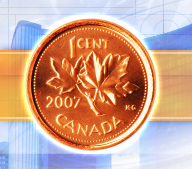Well!
The SPNO crafted a spreadsheet that is circulating for error detection and it inspired me to go looking for the results.
Elections Ontario has a rather crude interactive map that lacks a certain information and cartographic aesthetic Je ne sais quoi. Infographic standards aside you can click on a red, orange, green or blue section of the map and get results in a small pop up window.

You can go below the map and select from a drop down box , your riding or your candidate and get the results.

You can also scroll way down and see the voter turnout – an appauling 52.8 percent, a record low according to CBC News. You cannot however YET download a spreadsheet with the Riding name, Riding #, Party Name, Party Candidate, # of votes, total # of voters, % of the vote so that you can do your own global analysis. For instance which parts of the province voted more and others less and then try and figure out why from a public policy or communications process. On Election Night the Elections Ontario 2007 site was unavailable due to over demand! 🙁
Elections Ontario however lets you download the electoral district (ED) boundary maps, the ED Names and codes list, the Postal Code File by ED (.zip + .xls), transposition of electors and votes spreadsheets (.xls), the Preliminary List of Electors for the 2007, and the 107 EDs Shapefile (.shp). This is really fantastic! Dunno what the licenses are, nor are these files accompanied by any metadata but the fact they are offering these to citizens free of charge is amazing! If you get a change – do tell you new MP and Elections Ontario how happy you are about that!
As for other coverage on Election Night – October 10, 2007. I got my results from Globe and Mail Ontario Election 2007 and CBC Ontario Votes since the Elections Ontario was down.
The Globe provided a MP postal code look-up tool, and a by first and last name of your candidate look up. What I loved best however were the riding stats. They have both 2007 and 2003 riding results. At a glance on Wed. I guessed right away that the turnout was really low which was later confirmed. It also provided me with some context. It did not have an overall map, nor could I see a full provincial picture but I pretty quickly got to see who my new MP was and then go chase my son around who scared me when I got home by telling me that the party I loathe got in!
The CBC Ontario Votes site was not as shnazzy as the Globe’s reporting but it provided much more context, particularly at the riding level. It is also where I first read about the tragic results of the poorly marketed referendum on electoral change – MMP.



The CBC also provides an excellent page called Ontario by the Numbers, which is loaded with data and information on voter turnout, changes overtime etc. It is doing a great job as a public broadcaster.
The Site that surprised me the most was an independent called Nodice.ca. It came up first in all searches on Election night and still today. It also did not crash as did the Elections Ontario site. It is
an independent website which contains educational resources and links for Canadian teachers and students, and information about federal, provincial and territorial elections in Canada. The site gets its information from a variety of sources, including news articles (print, televised, or otherwise), party websites, candidates, as well as from information received through online contact forms. While the accuracy of the information received cannot be guaranteed, the majority of information is sourced before it is posted. Nodice.ca is owned and operated by David A. MacDonald.
The site contained the winners per riding, only the top 4 parties though! The seat projections, opinion polls, results, a list of leaders by party overtime, links to all the parties, and so on. This is an example of an excellent citizen led initiative. Funny, because I did not know who and what this site was about I had to validate what I read with other news and data sources that I trust and which have clear accountability structures. All the sites did have disclaimers on the results they posted!

This is all I looked at. At home I listen to Radio Canada, and their coverage was not the best and the windup toward the elections was also not superb. I guess Ontario is also not the province of their target audience. The best windup I got was from my son, whose grade 8 English teacher had them follow articles in the Globe and write up the issues everyday. He kept me up to date. The Issue that got me talking the most was Religious Private School Funding. I do not read the French press so missed it to!
From a data, information and news perspective democracy won out. The MMP issue lost out however as the public education component was near nil! Wonder who got the communication’s contract for that one! Yikes!
Would really like to know what you followed if not covered here, more from the French Press and other grassroots blogs or sites that provided good coverage. For instance in Montreal Ile Sans Fil, Zap Québec with CivicSense RSS fed the blogs, sites, you tube video’s etc. to their portal pages during the Québec elections. Very cool!









Comments on Posts